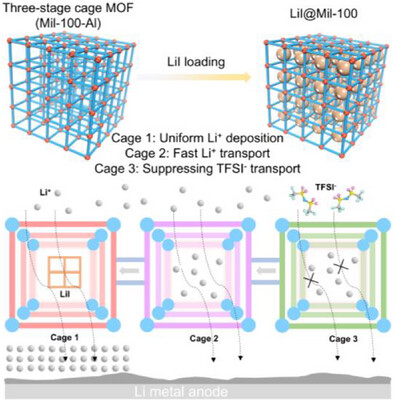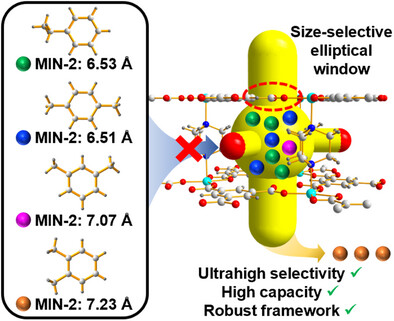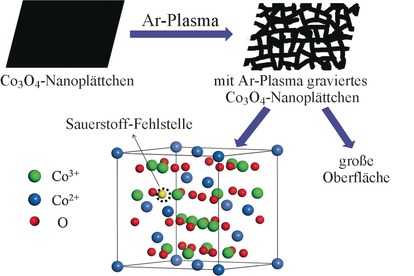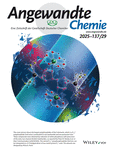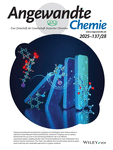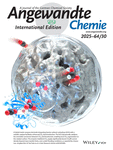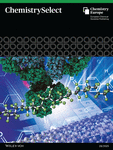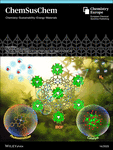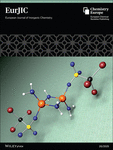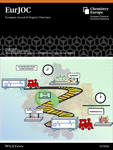Editors-in-Chief: Frank Maass, Nathalie Weickgenannt
Executive Editors: Charlotte Gers-Panther, Theresa Kueckmann, Xin Su (苏鑫), Suzanne Tobey
Scientific Advisory Committee Chair: Helma Wennemers
International Advisory Board Chair: Annette G. Beck-Sickinger
Die Angewandte Chemie ist eine in der Chemie weltweit führende Zeitschrift der Gesellschaft Deutscher Chemiker (GDCh). In einer einzigartigen Mischung aus hervorragenden Übersichtsartikeln, Highlight-Beiträgen, Zuschriften und Forschungsartikeln erscheinen beinahe täglich Beiträge online.
Journal Metrics
- 20%Acceptance rate
- 8 days Submission to first decision
Our portfolio is growing
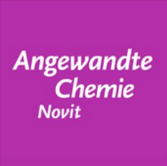
On behalf of the German Chemical Society (GDCh), we are excited to announce the launch of Angewandte Chemie Novit an Open-Access journal that publishes and promotes the most significant manuscripts submitted to Angewandte Chemie. In a unique selection process, articles that are evaluated at Angewandte Chemie and rated as exceptional by the reviewers, the editorial team, and the Scientific Advisory Committee will receive an offer for up-transfer to Angewandte Chemie Novit.
Titel-Beiträge
Editorial
Diversity, Equity, and Inclusion
 The Angewandte Chemie team considers diversity, equity, and inclusion (DE&I) among our core values and essential to our editorial practices. Read more about our understanding of these values and actions the team has taken on the dedicated DE&I page.
The Angewandte Chemie team considers diversity, equity, and inclusion (DE&I) among our core values and essential to our editorial practices. Read more about our understanding of these values and actions the team has taken on the dedicated DE&I page.
Neueste Meldungen
25.07.2025
VIP: Functionalized Calix[4]Nanocones
Anika Haidisch, Dr. Frank Rominger, Prof.Dr. Michael Mastalerz
![Functionalized Calix[4]Nanocones Functionalized Calix[4]Nanocones](/cms/asset/7bc4af0d-db1c-42a5-9fba-2ba45dd569d2/ange202512873-gra-0001-m.jpg)
Herein we present a synthesis of a nanocone based on a calix[4]arene, which has additional functional groups at the peripheral rims. Due to its rigid structure in combination with alkoxy groups on both the upper and the lower rim, the nanocone was tested for the binding of alkaline ions in solution. It exhibits high selectivity for binding Na+ over Li+ and also K+ in CDCl3.
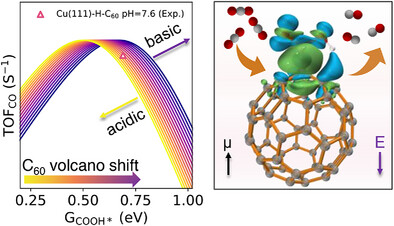 25.07.2025
25.07.2025
VIP: C60 Fullerene as the Active Site for CO2 Electroreduction
Introducing...
Presseinfo
Dreifach-Schlüssel für hohe Sicherheit
Sehr sicher und hocheffizient: Ver- und Entschlüsseln mit lumineszierenden Perowskiten
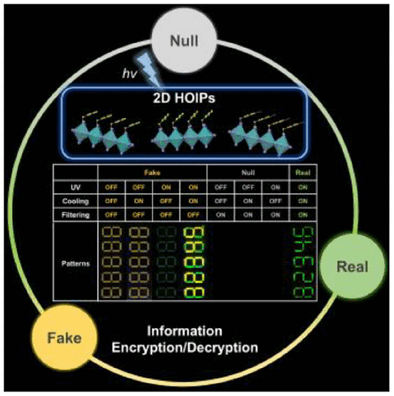
Um eine hohe Datensicherheit zu gewährleisten, soll die Verschlüsselung möglichst nicht zu knacken sein, das Auslesen der Daten dennoch rasch und unkompliziert laufen. Eine neuartige Strategie zur optischen Ver- und Entschlüsselung von Informationen stellt ein chinesisches Forschungsteam jetzt in der Zeitschrift Angewandte Chemie vor. Sie basiert auf Verbindungen, deren Leuchteigenschaften (Lumineszenz) empfindlich austariert werden und sich als Antwort auf verschiedene externe Stimuli rasch ändern.
Articles
Exposure of Au Atom on Au(111) in Metal Nanoclusters for pH‐Universal Electrocatalysis
- 21 July 2025
Graphical Abstract
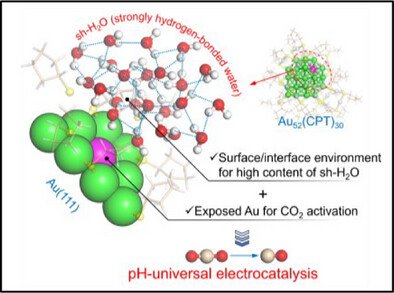
An exposed Au atom on Au(111) in Au52 nanoclusters and as-formed surface/interface environment were constructed by introducing nonaromatic ligand. In situ characterizations and simulations confirmed the activation of CO2 and the accelerated protonation of strongly hydrogen-bonded water by the surface/interface modification, leading to pH-universal electrocatalysis with high activity, selectivity, and durability.
A C‐to‐B Atom Swap on Coumarins and Dibenzolactones
- 21 July 2025
Graphical Abstract
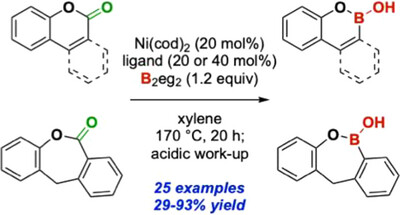
Cyclic boronic hemiesters, boron isosteres of lactones, display unique and valuable chemical properties. Herein, we report a novel method for their synthesis via nickel-catalyzed decarbonylative borylation, enabled by electron-rich phosphine ligands to achieve a formal “C-to-B” atom swap. This strategy efficiently transforms a variety of coumarin derivatives and seven-membered dibenzolactones into the corresponding benzoxaborines, showcasing broad functional group tolerance and synthetic versatility.
Synergistic Covalently and Mechanically Interlocked Polymer
- 21 July 2025
Graphical Abstract
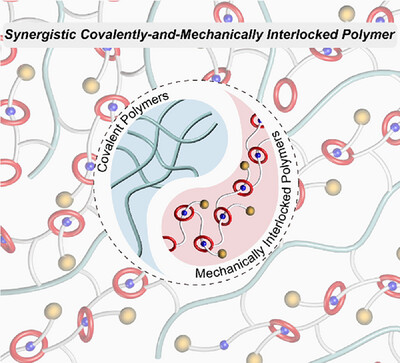
We present the innovative design and construction of a synergistic covalently and mechanically interlocked polymer (CMIP), in which the covalent polymer (CP) and the mechanically interlocked polymer (MIP) are seamlessly integrated into a unified system. This design effectively overcomes the inherent limitations of traditional polymer networks, establishing a new paradigm in the field of novel materials design.
Single‐Atom Ligation of Four Different Alcohols at One Silicon Center: Methodology Development and Proof of Concept
- 20 July 2025
Graphical Abstract

Triphenylchlorosilane (Ph3SiCl) was developed as a tetrachlorosilane surrogate for the iterative and controllable ligation of four different alcohols to one silicon center to generate fully heteroleptic tetraalkoxysilanes. Mechanistic studies revealed the unusual transformations of Wheland intermediates into both silicon cations and silylated phenylhalonium ions in low and comparable activation barriers.
Crystal Facet‐Dependent Photocatalytic Hydrogen Evolution From Ultra‐Stable Cu‐Zr/Hf Heterobimetallic Metal–Organic Frameworks
- 20 July 2025
Graphical Abstract

Crystal engineering and facet engineering were concurrently employed to develop a series of precious-metal-free heterobimetallic MOFs (M-BCA-M', M = Cu+, M' = Zr4+ or Hf4+) for record-high photocatalytic hydrogen production in pristine MOFs. The high performance and crystal-facet dependent behaviors were investigated to provide molecular-level insights into the coordination regulation and morphology control of pristine MOFs for efficient photocatalysis.
Fully Exposed Silver Clusters Enabling Highly Efficient Photocatalytic H2O2 Production in Pure Water
- 20 July 2025
Graphical Abstract
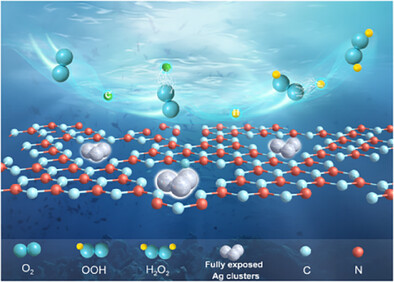
Fully exposed silver clusters were successfully anchored on poly(heptazinimide), demonstrating exceptional photocatalytic activity toward H2O2 generation in pure water from O2. Systematic evaluation revealed that it also exhibited significantly enhanced performance compared to their single-atom counterpart due to superior electronic properties and synergetic effect between adjacent Ag atoms.
Halogen‐Driven Ion Transport Homogenization in 3D Hierarchical MOF for Ultrastable Solid‐State Lithium Metal Batteries
- 20 July 2025
Graphical Abstract
Thermally Activated Delayed Fluorescence Materials Featuring Multipathway Charge Transfer for High‐Efficiency BT.2020‐Compliant Deep‐Blue OLEDs
- 20 July 2025
Graphical Abstract
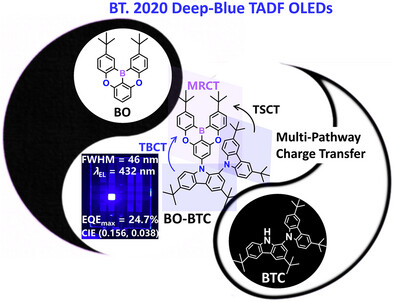
Highly efficient ultra-deep-blue TADF emitters were developed through the construction of multipathway charge transfer characteristics. OLEDs employing the optimized molecule as the terminal emitter and as a sensitizer exhibit high-performance deep-blue electroluminescence, achieving EQEs of up to 24.7% and 37.9%, with corresponding CIE-y values of 0.038 and 0.106, respectively.
Correspondence on “Suppressing Energy Migration via Antiparallel Spin Alignment in One-Dimensional Mn2+ Halide Magnets with High Luminescence Efficiency”
- 18 July 2025
Graphical Abstract
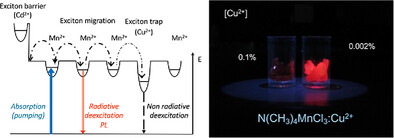
The photoluminescence quantum yield (PLQY) of one-dimensional (CH3)4NMnCl3 (TMMC) doped with Cd2+ remains consistently high (∼95%) across the studied composition range (x = Cdx/Mn1-x = 0–0.22). By combining PL lifetime measurements, high-pressure optical absorption spectroscopy, and X-ray diffraction structural analysis, we demonstrate that the PLQY exhibits only minimal dependence on x. This finding contrasts with recent reports,1 claiming that the PLQY initially rises with Cd2+ content up to x = 0.08, then declines sharply from 95% to 77% at x = 0.22.
Highly Selective Adsorption of Para‐Xylene, Ethylbenzene, and Explicit Exclusion of Ortho‐Xylene from Xylene Isomers Using a Pillar‐Layered MOF with Tuned Pore Channels
- 18 July 2025
The following is a list of the most cited articles based on citations published in the last three years, according to CrossRef.
Fluoride‐Free Synthesis of Two‐Dimensional Titanium Carbide (MXene) Using A Binary Aqueous System
- 15717-15721
- 5 October 2018
A Stepwise Huisgen Cycloaddition Process: Copper(I)-Catalyzed Regioselective “Ligation” of Azides and Terminal Alkynes†
- 2708-2711
- 15 July 2002
Plasma-Engraved Co3O4 Nanosheets with Oxygen Vacancies and High Surface Area for the Oxygen Evolution Reaction
- 5363-5367
- 17 March 2016
Patterned Paper as a Platform for Inexpensive, Low-Volume, Portable Bioassays†
- 1340-1342
- 5 February 2007
Graphical Abstract

Einfach überzeugend: Ein Verfahren zur Mustererzeugung auf Papier mit einem Fotolack liefert definierte, millimetergroße Kanäle aus hydrophilem Papier und hydrophobem Polymer. Diese Art von bedrucktem Papier ist ein Prototyp billiger, transportabler und technisch einfacher Plattformen für gebündelte Bioassays mit Mikrolitervolumina einer einzelnen biologischen Probe.
Mixed‐Metal MOFs: Unique Opportunities in Metal–Organic Framework (MOF) Functionality and Design
- 15330-15347
- 12 April 2019
Graphical Abstract

Die richtige Mischung: Dieser Kurzaufsatz fasst die neusten Entwicklungen in der Synthese von gemischtmetallischen Metall-organischen Gerüsten (MM-MOFs) zusammen. Diese multivariaten MOFs zeigen ein höheres Maß an Komplexität als homometallische MOFs und sind einfachen MOFs häufig in Bezug auf ihre Eigenschaften und Anwendungen, insbesondere in der heterogenen Katalyse, überlegen.
Treatment of CrVI-Containing Mg(OH)2 Nanowaste†
- 5701-5704
- 9 July 2008
Graphical Abstract

Sauber getrennt: Die Behandlung nanometergroßer, CrVI-haltiger Mg(OH)2-Abfallpartikel mit dem Mineralisator NaHCO3+Na2CO3 überführt diesen nanoskaligen Abfall in ein nichttoxisches Volumenmaterial und eine konzentrierte Lösung des Schwermetalls. Der Prozess verläuft über zwei Stufen: Zunächst erfolgt eine Desorption von CrVI, der sich ein schnelles Wachstum von Nanokristallen bis zur vollständigen Trennung von den CrVI-Ionen anschließt (siehe Bild).
Energetic Zinc Ion Chemistry: The Rechargeable Zinc Ion Battery†
- 957-959
- 13 December 2011
Graphical Abstract

Eine wiederaufladbare Zinkionenbatterie wird vorgestellt, die als ein ideales wässriges Energiespeicherelement dient. Die Batterie zeichnet sich durch eine hohe Kapazität, schnelle Ladung/Entladung, Sicherheit und Umweltfreundlichkeit aus. Sie besteht aus einer α-MnO2-Kathode, einer Zinkanode und einem milden wässrigen ZnSO4- oder Zn(NO3)2-Elektrolyten. Der Batterievorgang beruht auf der Wanderung von Zn2+-Ionen zwischen Kathode und Anode.
Mechanochemistry for Synthesis
- 1030-1041
- 11 July 2019
Graphical Abstract

Mechanochemische Reaktionen durch Mahlen haben sich als leistungsfähiges, lösungsmittelfreies Synthesewerkzeug in verschiedensten Bereichen etabliert. Dieser Kurzaufsatz gibt einen Überblick über die Anwendung von Kugelmahlen in der Molekular- und Materialsynthese und beleuchtet aktuelle Entwicklungen wie Enzymkatalyse, Photomechanochemie, Katalyse und medizinische Mechanochemie.
Compromising Science by Ignorant Instrument Calibration—Need to Revisit Half a Century of Published XPS Data
- 5034-5038
- 24 January 2020
Graphical Abstract
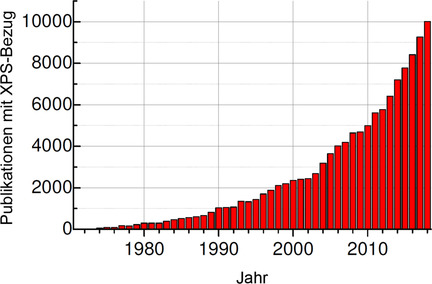
Röntgenphotoelektronenspektroskopie (XPS) ist eine unverzichtbare Technik in der modernen Materialwissenschaft. Eine Literaturdurchsicht zeigt, dass in sehr vielen Fällen eine unkorrekte Referenzierung der Bindungsenergieskala verwendet wird. Ziel dieses Beitrags ist es, die vorhandenen Probleme zu benennen und eine bessere Verfahrensweise vorzuschlagen.
Highly Photoluminescent Carbon Dots for Multicolor Patterning, Sensors, and Bioimaging†
- 4045-4049
- 28 February 2013
Graphical Abstract

Farbenspiele: Polymerartige Kohlenstoffpunkte (CDs) können schnell und in großen Mengen hergestellt werden. Mit ca. 80 % erzielen die CDs die bisher höchsten Quantenausbeuten für fluoreszierende Kohlenstoffmaterialien, woraus sich Anwendungsmöglichkeiten in Vielfarben-Musterbildung und Biosensoren ergeben könnten.
Recent issues
- Volume 137, Issue 30July 21, 2025
- Volume 137, Issue 29July 14, 2025
- Volume 137, Issue 28July 7, 2025
- Volume 137, Issue 27July 1, 2025



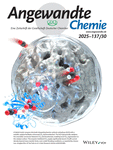

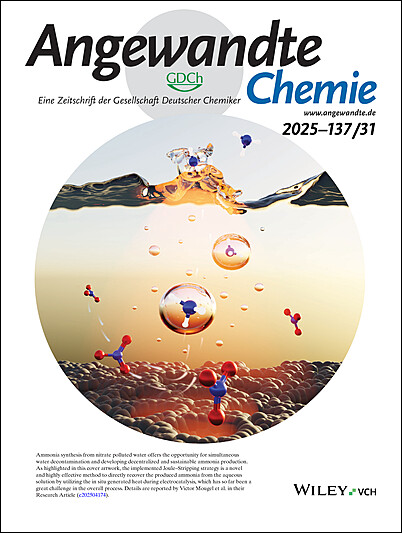
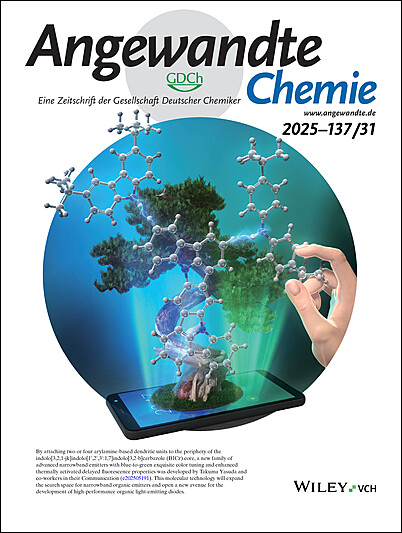
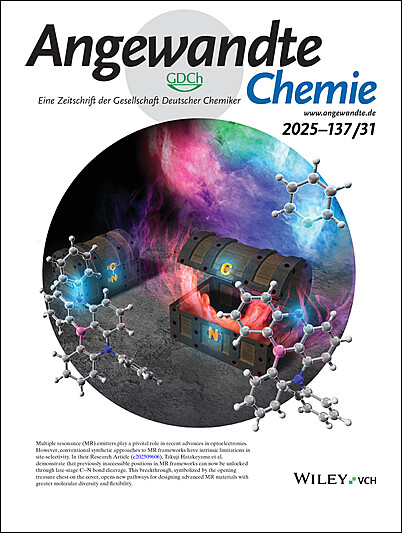
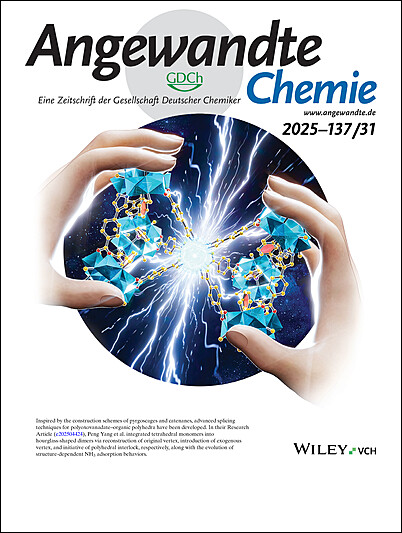
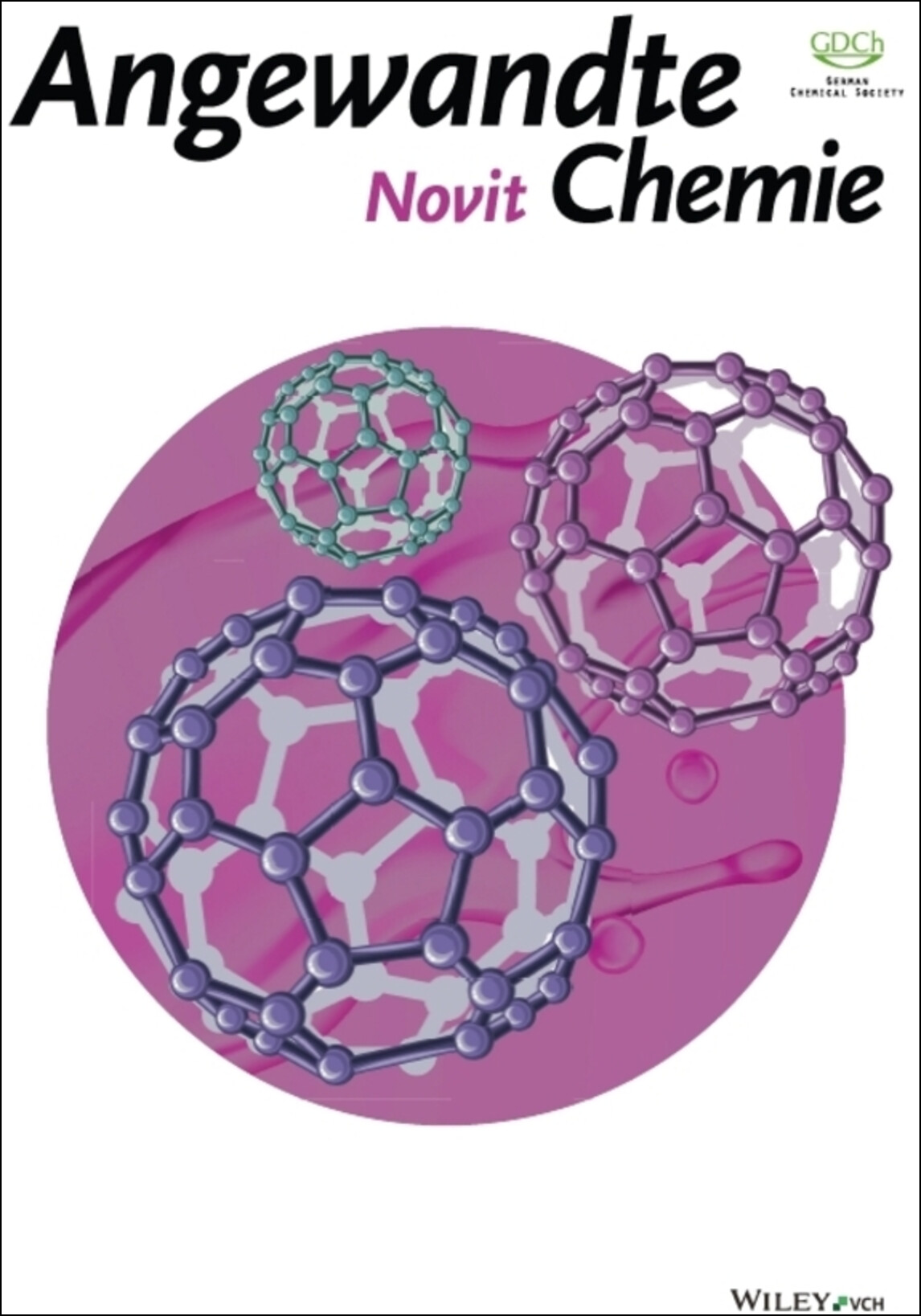
 25.07.2025
25.07.2025
